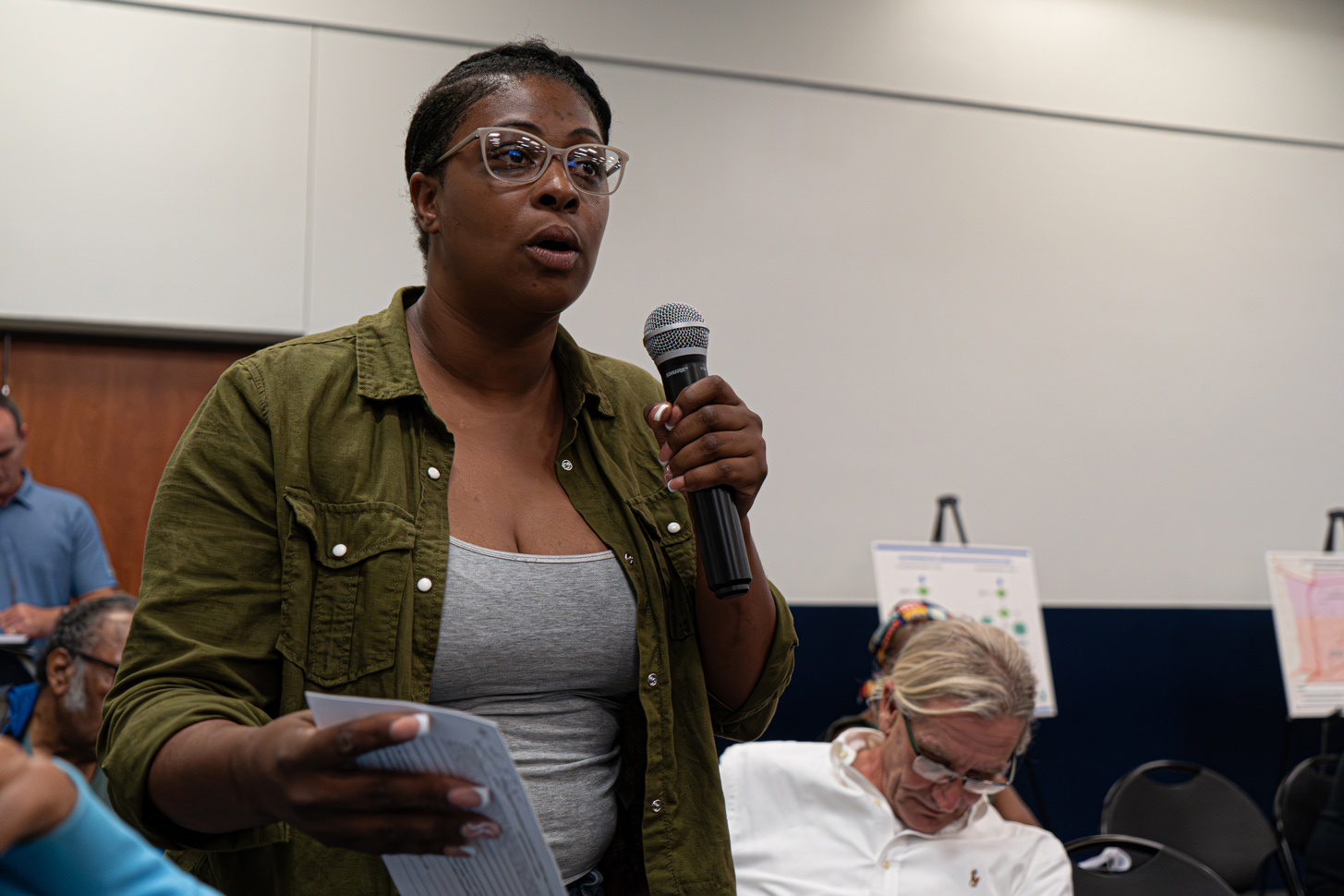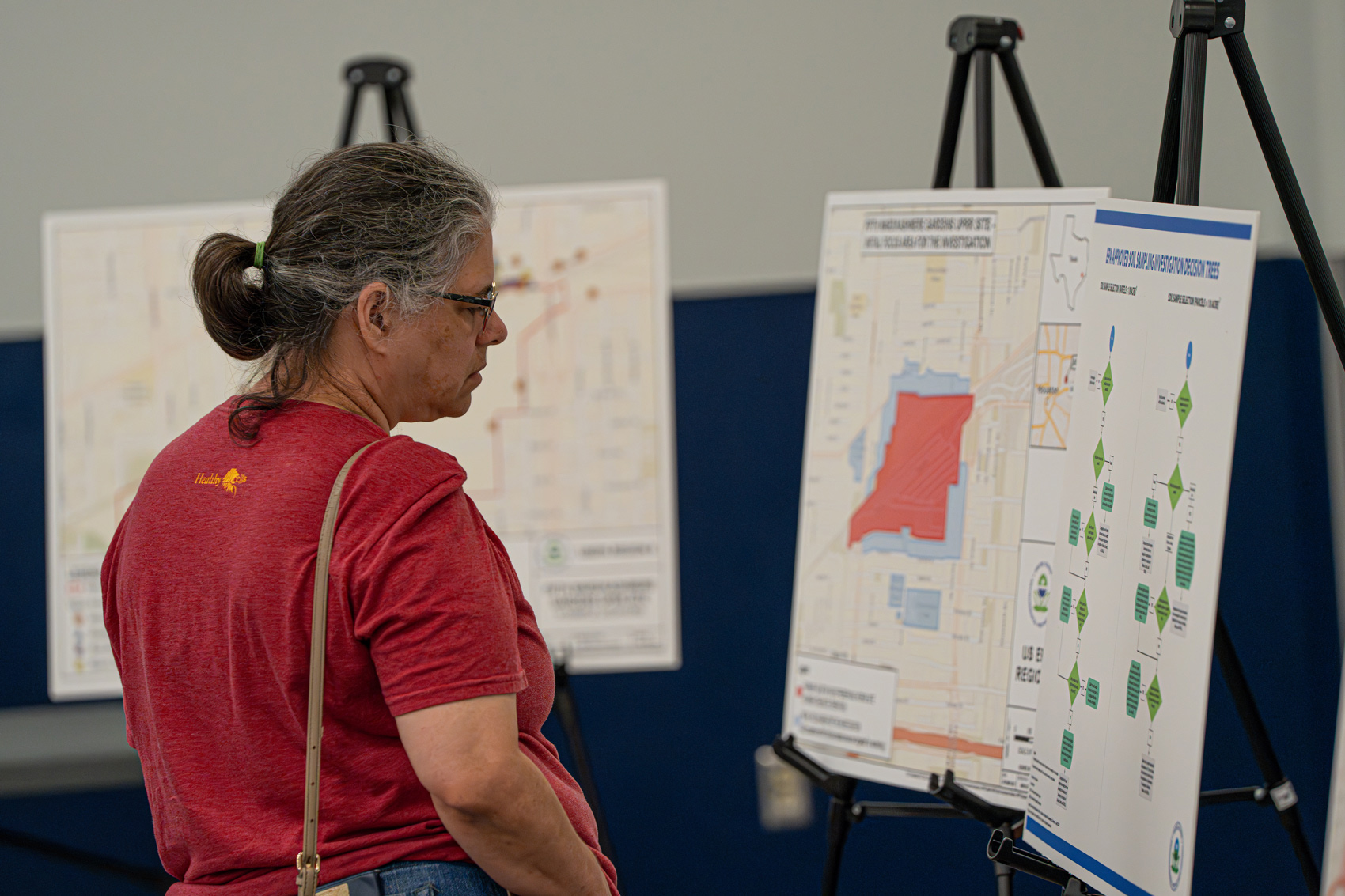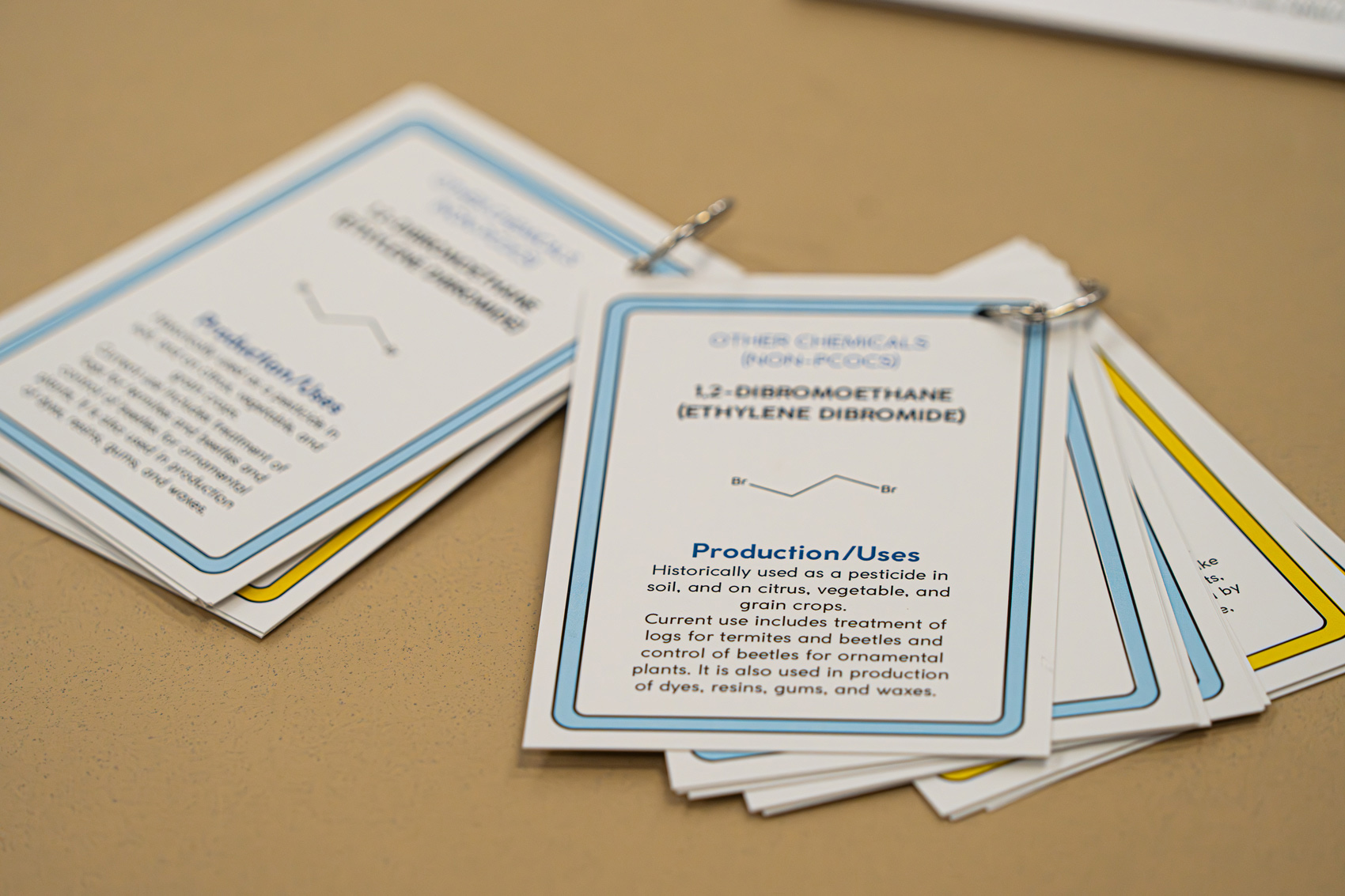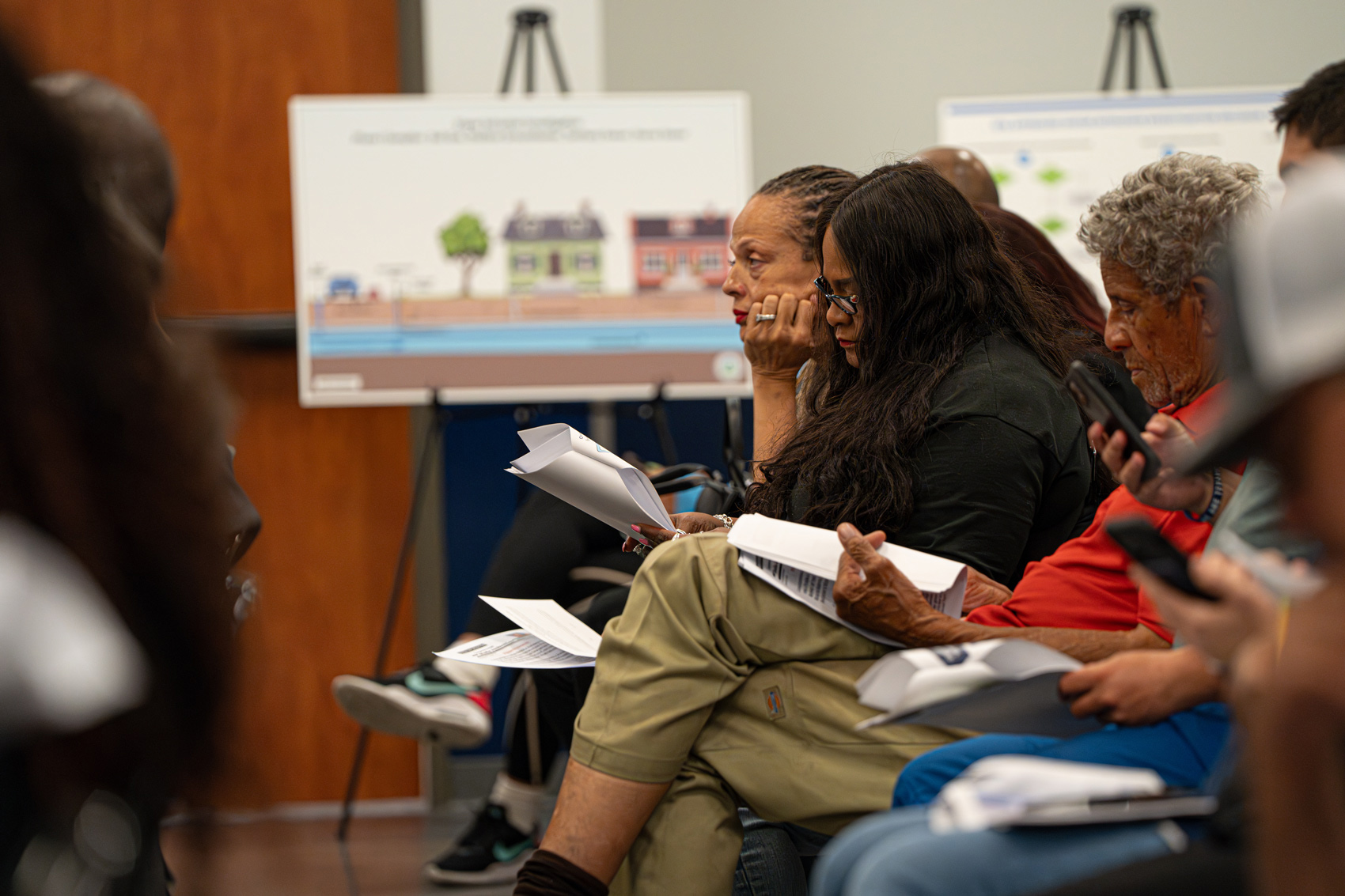|
Getting your Trinity Audio player ready...
|
The Environmental Protection Agency released its second set of test results measuring contamination near the Union Pacific railyard in Greater Fifth Ward, finding that 13 percent of the locations tested so far exceed EPA’s levels of creosote-related chemicals.
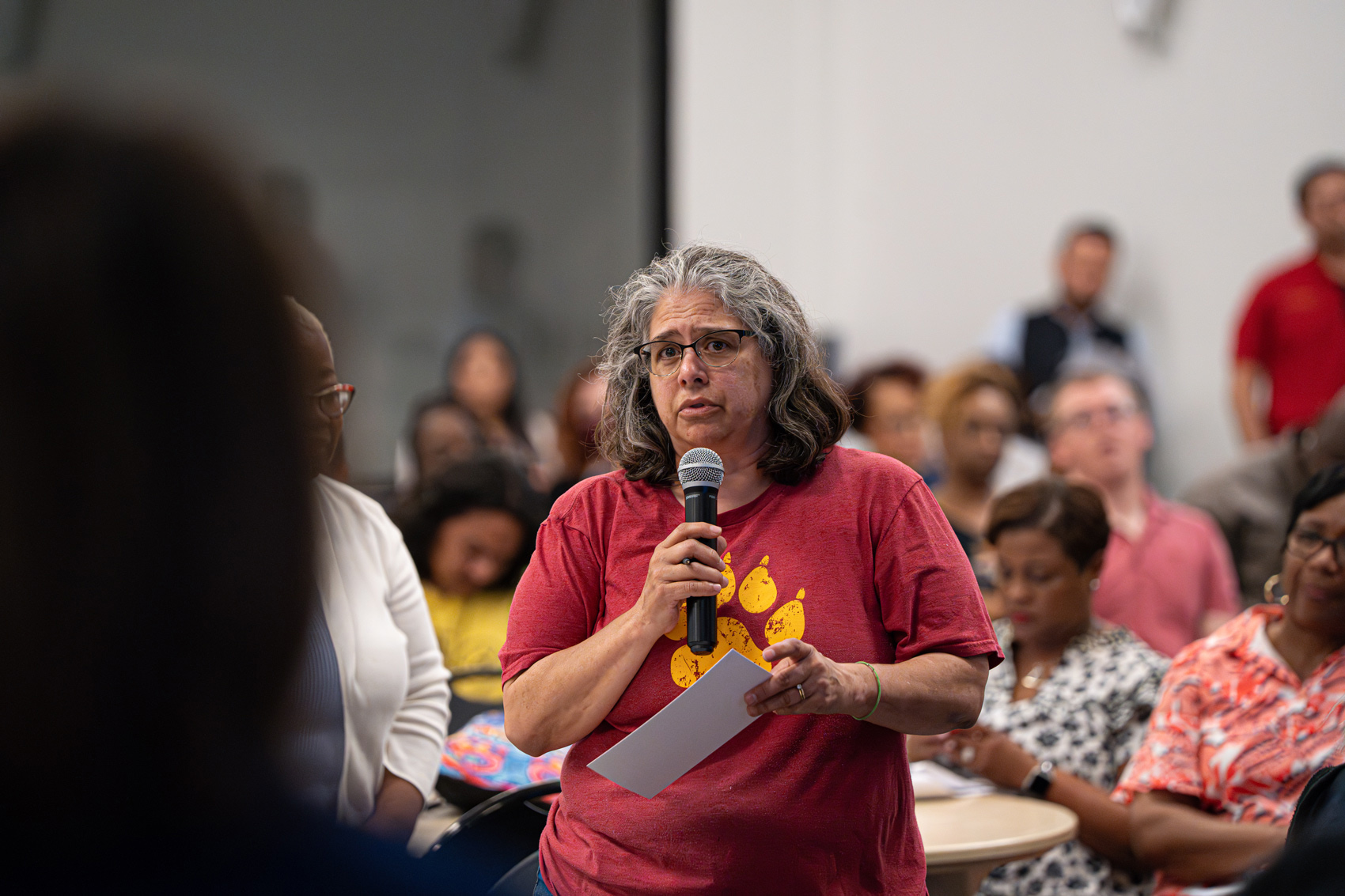
Results for another 26 locations have yet to be reported, but of the 91 tested so far, chemicals exceeding EPA’s level were found in sanitary sewers, storm sewers, monitoring wells and in soil gas north, east and west of the railyard.
“There are some chemicals that are exceeding the EPA screening level. We have found six creosote chemicals and five other chemicals,” Casey Luckett Snyder, EPA project manager for the Greater Fifth Ward sampling project, told residents at a public meeting Tuesday. “What we need to do next is to track those chemicals and do some additional investigation.”
In six cases, the creosote-related chemical Benzene exceeded limits in water tested as much as 51.5 times the EPA screening level. Benzene can cause cancer in humans. Another chemical – Naphthalene – was detected in water as much as 283 times the EPA screening level. Naphthalene is a probable carcinogen that has been shown to cause larynx and intestine cancer.
Luckett Snyder told Greater Fifth Ward community members the testing effort is nearly complete.
‘We don’t have the final lab data yet,” said Luckett Snyder. “So this is a good dataset, but it’s not the entire dataset. We just didn’t want to wait until the 100 percent came back. I want you guys to know what I know.”
Creosote contamination in Greater Fifth Ward
From 1899 to 1984, Southern Pacific Railroad used the hazardous substance creosote for wood preservation at a rail-yard site in Greater Fifth Ward. The still-operating railroad is now owned by Union Pacific and since November, the company – monitored by the EPA – has been testing the groundwater and soil in the surrounding community.
Creosote, which is derived from coal and wood, is used to coat railroad ties. It contains several known carcinogens. Over time, these chemicals leached underground and spread out into the community, creating a contaminated groundwater plume under residential homes just north of the property.
In 2019, the state designated Greater Fifth Ward, along with Kashmere Gardens and Denver Harbor, a cancer cluster – which means a higher-than-average rate of cancer cases.
“When looking at those creosote chemicals, [the EPA] didn’t find anything that was unexpected,” said Loren Hopkins, chief environmental science officer for the Houston Health Department. “The department had done a little pilot testing before this and we didn’t see very much either. If it was a really serious situation, we’d be seeing high levels across the board.
But for those spots that are elevated, Hopkins said she’s glad the EPA going to extend their investigation and look closer.
“We’re really fortunate the EPA is taking this so seriously,” she said.

Union Pacific pledges transparency during EPA tests
Detecting Creosote-related chemicals in the vapor and water is just the first step in a longer EPA process. The agency will now have to determine if these locations with higher levels of creosote-related chemicals are directly related to the rail-yard operations.
The EPA says this evaluation goes through “multiple lines of evidence approach” – or through the agency's own calculations. If there is property within 100 feet of the contamination, the EPA and Union Pacific will conduct more testing. In the case of the sanitary sewer, investigators will inspect the plumbing in nearby homes.
In a statement, Union Pacific said that the EPA’s scientific explanation of the test results released so far is crucial to drawing accurate conclusions about the next steps, and that they remain committed to transparency and open communication until the work is done.
Raising questions about EPA tests near railyard
Some residents at the public meeting were ultimately frustrated with the presentation, however.
Deborah Amador, a resident living in Greater Fifth Ward, expressed concerns that her property was not being tested. Her home is right across the street from the EPA testing area. Four of Amador’s family members have passed from cancer after living in Greater Fifth Ward for decades.
“I live right across the street from your blue line, so I do not get tested,” Amador said. “I don’t get anything, I don’t get any remediation or any testing.”
Luckett Snyder said this was only the first pass through the neighborhood. If anything alarming popped up after sampling, the EPA could expand its search to spots like Amador’s.
Another resident – Kourtney Revels – asked if there was a program to educate residents in the community on how to test in their own communities, rather than get outside work.
“It’d be great if there was an opportunity for the community to be put in the position where we could be doing the testing and getting compensated for it,” Revels said. “What if they could give us careers in environmental science? It’s our community.”
Starting in May, the EPA will begin testing soil in the neighborhood and at the site as well as vapor sampling in the hotter summer months, compared to the cooler months the agency already sampled. In the fall, the EPA will produce a human health risk assessment and ultimately determine if clean-up is necessary.



